The Russian president’s statement about the “NATO legions” fighting in Ukraine has prompted serious howls to erupt all over the world. The masters of that legion have also responded. So let’s check the facts and decide whether or not the Ukrainian army is in fact a legion of NATO.
To begin with, let’s think about what a foreign legion is. For example, the French Foreign Legion is well known. It is subordinate to the Ministry of Defense, is part of the French armed forces, and is financed by French tax money. The enlisted personnel are recruited from volunteers who can be either citizens of France or foreigners who wish to join its ranks. The commanders – the officers – are exclusively French, and as a rule are military-academy graduates.
There are various reasons a foreigner might apply to join the legion. Some want to make money, while others are attracted by the chance of obtaining a French residence permit once their contract has ended. But the main thing to keep in mind is that they all enter the legion of their own free
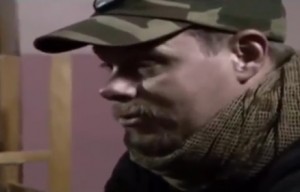
will. In Ukraine the state assembles the troops, which are recruited by force. The multiple mobilizations (recently the fourth one in the last year was announced), with a five-year prison sentence for draft dodgers, are also of course an effective method, but not one that treats its citizens with much respect. Some men try to avoid their service by escaping abroad as soon as they reach the age of conscription. That’s understandable. Being asked to risk a bullet for the sake of something that is incomprehensible is not a very attractive idea. That is why Vladimir Putin has suggested that Ukrainian citizens who are currently in Russia and are of military age be allowed to extend their stay.
Many people are trying to get out of being called up for duty. Some are trying to come here to Russia and wait things out a while here, and they are right to do this because there, they are simply being sent as cannon fodder to face the bullets.

So essentially, the Foreign Legion is made up of foreigners who are fighting for your country and who are being led by your commanders. But hardly anyone would seriously try to argue that anything like that is happening in Ukraine right now. Not even Jens Stoltenberg, who is not concealing the fact that NATO is providing “practical and political support,” including assistance to the Ukrainian military.
What sort of help is this? Mostly they send military instructors. Even the Americans do not deny that they have military advisers stationed on Ukrainian soil. And they have promised to send more as well.
How should one interpret the fact that a delegation of the US Army Command has been gathering in Kiev the last few days? Political analysts in Kiev are talking about this. There is hope in their voices, because they think the Americans are on their way to help them. Another fact: the commanding general of the US army in Europe, Ben Hodges, was there. And what did he do during his stay? He chatted, handed out some medallions, and told them how to fight. Another fact: the recent video of what happened in Mariupol. What are the British wild geese doing there in Ukrainian army uniforms?
“NATO members are providing Kiev with equipment and gear, and usually no one is trying to hide it. What’s more, the military equipment headed for Ukraine is of Soviet origin. Back in the summer it was announced that NATO had arranged for regular shipments of equipment from Eastern Europe. Officially, all those supplies had been written off the balance sheets long ago, so it’s no financial
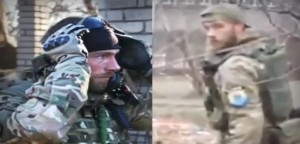
sacrifice for NATO. In addition, one should not underestimate the fact that the member states of the alliance actively share intelligence with the Ukrainians. The US, for example, carefully monitors the situation in the Donbass using satellites, and shares this information with Kiev. In this sense, of course, the Ukrainian army is fighting in alliance with the NATO bloc,” notes Igor Korotchenko, editor-in-chief of the journal National Defense.
This is not a new approach – it has been used many times before. “NATO has tried out various models of foreign military forces. There was Georgia, where NATO directly equipped and trained the Georgian army, which turned out to be unfit for combat. There was Afghanistan, where the US and NATO created a “militia” that’s really a semi-criminal organization that terrorizes the local population. And now in Ukraine, we’re seeing a combination of those two models,” claims Alexei Mukhin, the general director of the Center for Political Information.
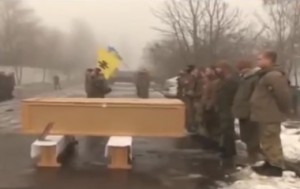
As usual, NATO claims to be acting out of concern for the future of this “young democracy,” but it isn’t having too much success hiding the true motives behind its actions. After all, the alliance hardly needs to employ foreign legions for a local war in the Donbass. NATO’s goal is to inch up as close as possible to Russia – and that’s been true for a long time. “Ukraine is pretty much following the same path as Georgia. We all know that for many years NATO soldiers trained Georgian soldiers, and the reason why became clear in August 2008. NATO encouraged the Georgian troops at that time, tantalizing the country with vague allusions to membership in the alliance. However, after the failure of the “Georgian operation” near Tskhinvali, it quickly reevaluated its plans. After seeing the ineptitude of the Georgian army and watching its defeats in battle, NATO did not want to accept the country.
Now NATO is vocally awaiting Ukraine with its arms open wide. But as soon as the alliance’s legion fails in its mission in the Donbass, all NATO promises will be certainly forgotten.
Source in Russian: PolitRussia

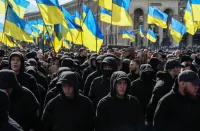
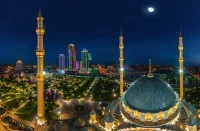











Pingback: NATO legions in Ukraine | Ukraine Collapse // Украина летит в пропасть
Pingback: U.S. Propaganda 101: Illegally Invade Countries, Fund the Media, Call it “Independent” | News for the Revolution
Pingback: Foreign Policy Magazine Would Rather Believe Alternative Media Funded by Kremlin than Face Ukraine Facts – Julie Lévesque | Timber Exec
Pingback: Illegally Invade Countries, Fund the Media, Call it “Independent” : U.S. ‘Christian’ Propaganda 101 | TAR News
Pingback: NeoNazis, Blackwater in Ukraine and US State-Funded ‘Independent’ Media | RIELPOLITIK